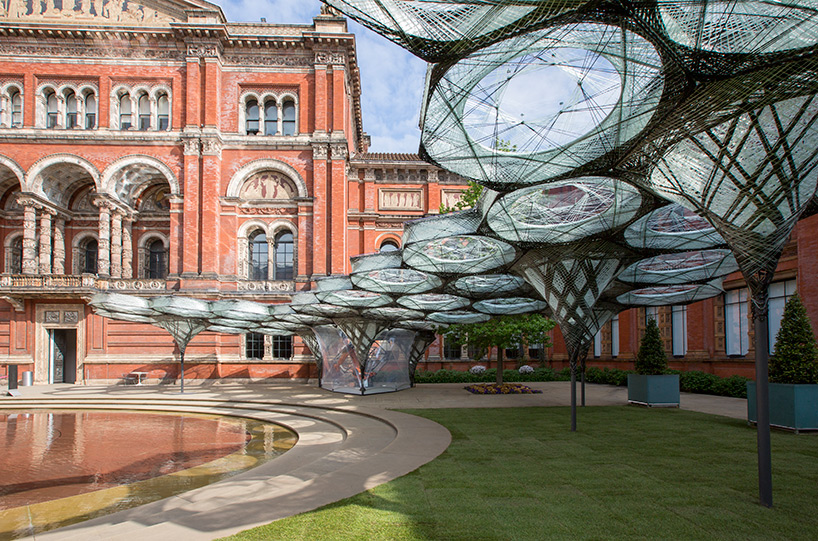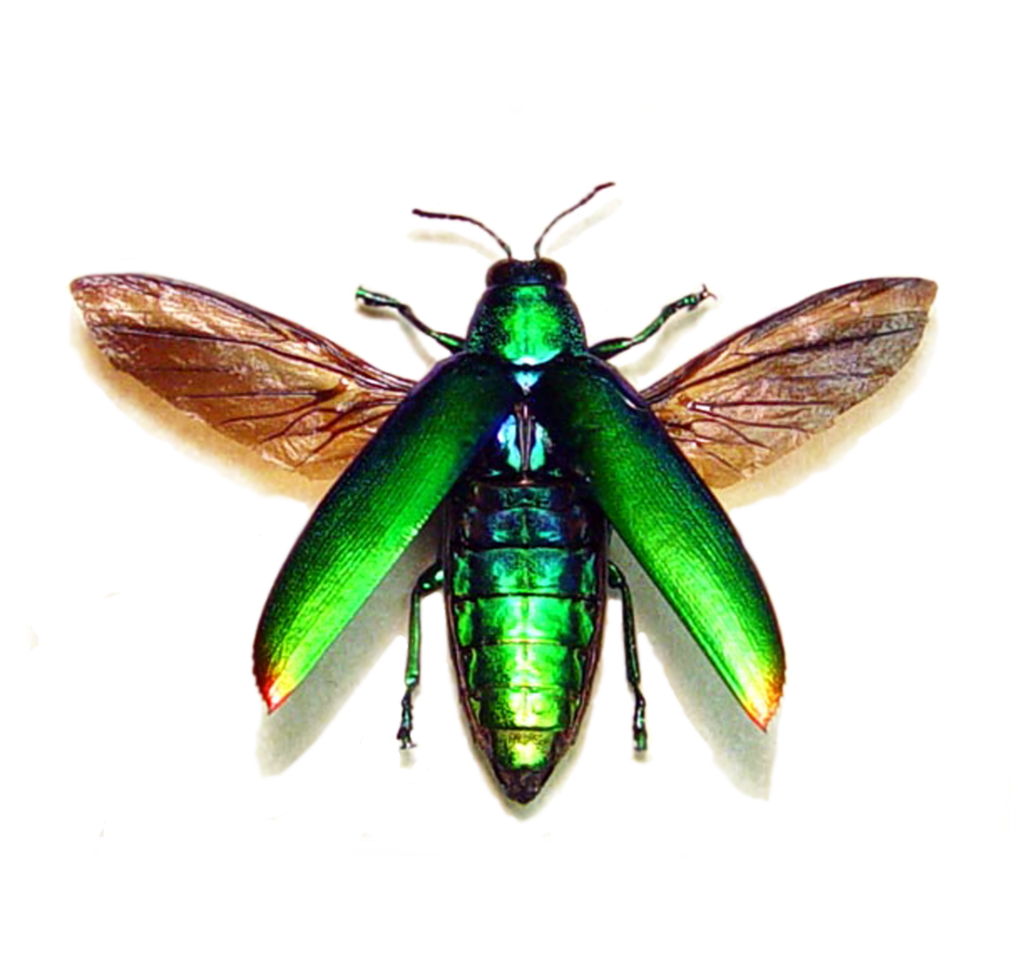
The Elytra Filament Pavillion is located in the Victoria and Albert Museum in London. It is kept in the John Madejski Garden where it will be on display from May 18th – November 6th, 2016. It is made by a robot called KUVA, which was programmed by a team from the University of Stuttgart. The robot weaves fibers across hexagonal structures, the weaving on the hexagons being denser in the center of the overall structure and lighter on the edges. It is incredibly lightweight and waterproof, and resembles a real-life spiderweb. Its design is inspired by the elytra beetle.

Each piece of the hexagon takes around 3 hours to create, and the robot continues to build the canopy even as the exhibit is open to the public. Sensors are placed in the canopy fibers, allowing the robot to collect data and monitor how visitors use the pavilion, which will influence how the canopy grows. This means that everyone who visits the pavilion actually takes part in how the art develops, intentionally or not. The team’s goal was to create an “urban greenspace” that can “evolve, reconfigure, and adapt with the use of the courtyard.”
Here’s a link to the museum’s official page on the project. The page also includes the video below, which gives more information about the project and how it was created. I could not find any information about the algorithm that they used, except that they created it themselves.
![[OLD – FALL 2016] 15-104 • COMPUTING for CREATIVE PRACTICE](wp-content/uploads/2020/08/stop-banner.png)